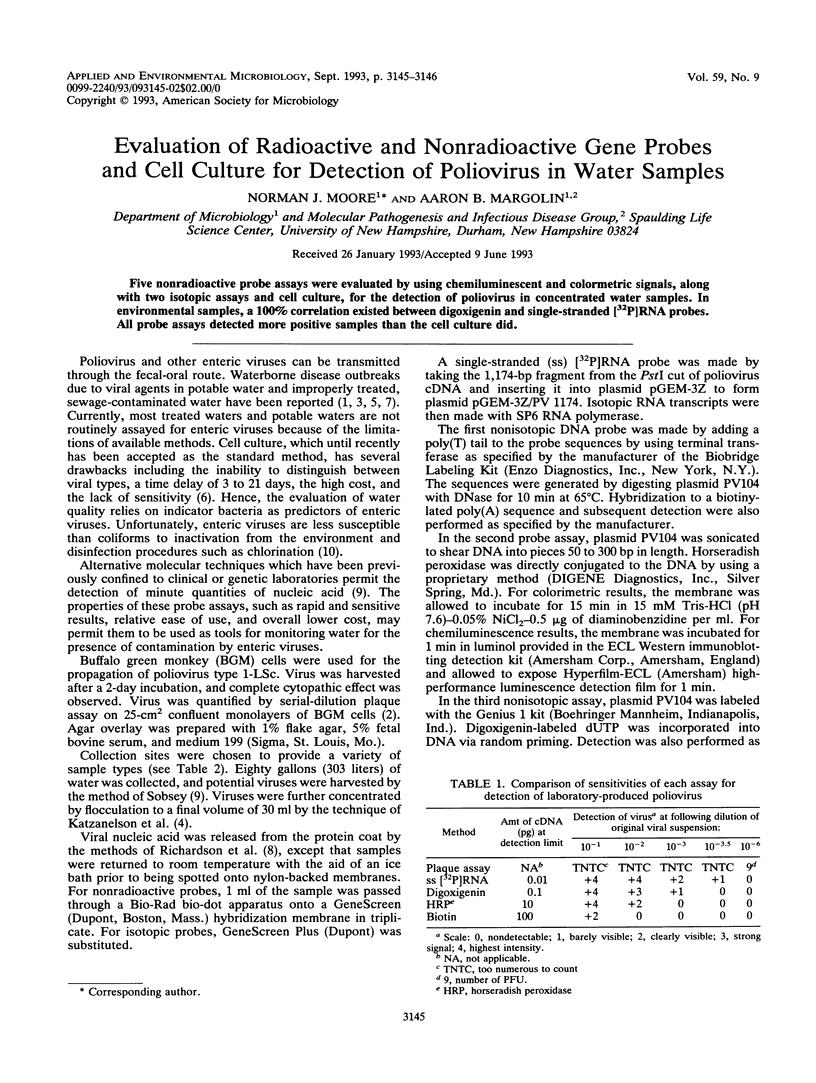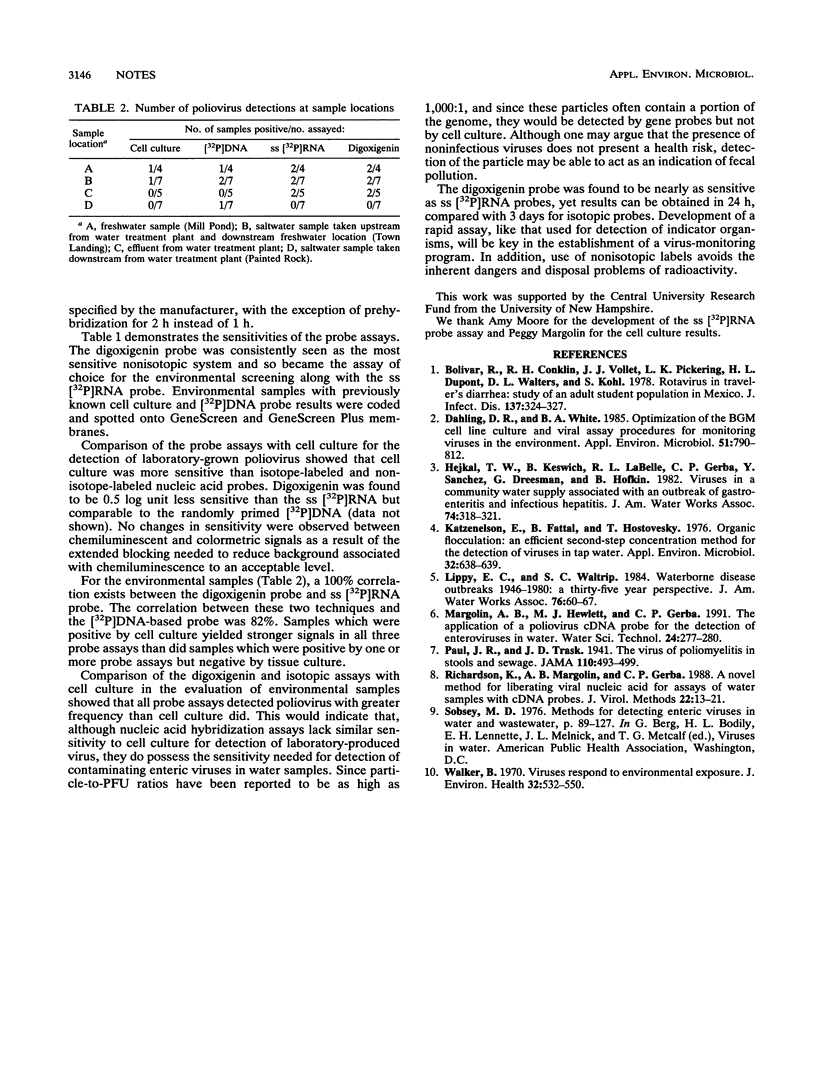Abstract
Five nonradioactive probe assays were evaluated by using chemiluminescent and colormetric signals, along with two isotopic assays and cell culture, for the detection of poliovirus in concentrated water samples. In environmental samples, a 100% correlation existed between digoxigenin and single-stranded [32P]RNA probes. All probe assays detected more positive samples than the cell culture did.
Full text
PDF

Selected References
These references are in PubMed. This may not be the complete list of references from this article.
- Bolivar R., Conklin R. H., Vollet J. J., Pickering L. K., DuPont H. L., Walters D. L., Kohl S. Rotavirus in travelers' diarrhea: study of an adult student population in Mexico. J Infect Dis. 1978 Mar;137(3):324–327. doi: 10.1093/infdis/137.3.324. [DOI] [PubMed] [Google Scholar]
- Dahling D. R., Wright B. A. Optimization of the BGM cell line culture and viral assay procedures for monitoring viruses in the environment. Appl Environ Microbiol. 1986 Apr;51(4):790–812. doi: 10.1128/aem.51.4.790-812.1986. [DOI] [PMC free article] [PubMed] [Google Scholar]
- Katzenelson E., Fattal B., Hostovesky T. Organic flocculation: an efficient second-step concentration method for the detection of viruses in tap water. Appl Environ Microbiol. 1976 Oct;32(4):638–639. doi: 10.1128/aem.32.4.638-639.1976. [DOI] [PMC free article] [PubMed] [Google Scholar]
- Richardson K. J., Margolin A. B., Gerba C. P. A novel method for liberating viral nucleic acid for assay of water samples with cDNA probes. J Virol Methods. 1988 Oct;22(1):13–21. doi: 10.1016/0166-0934(88)90083-3. [DOI] [PubMed] [Google Scholar]


